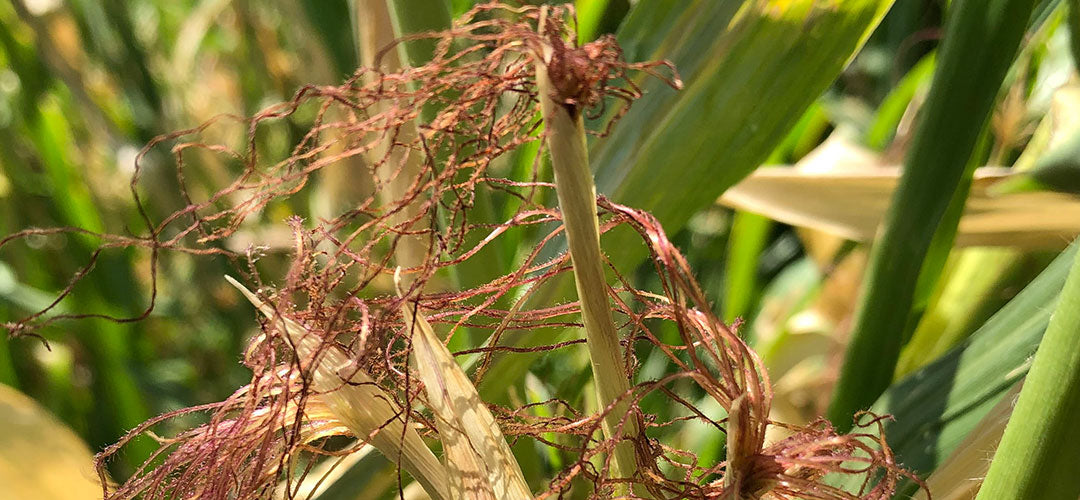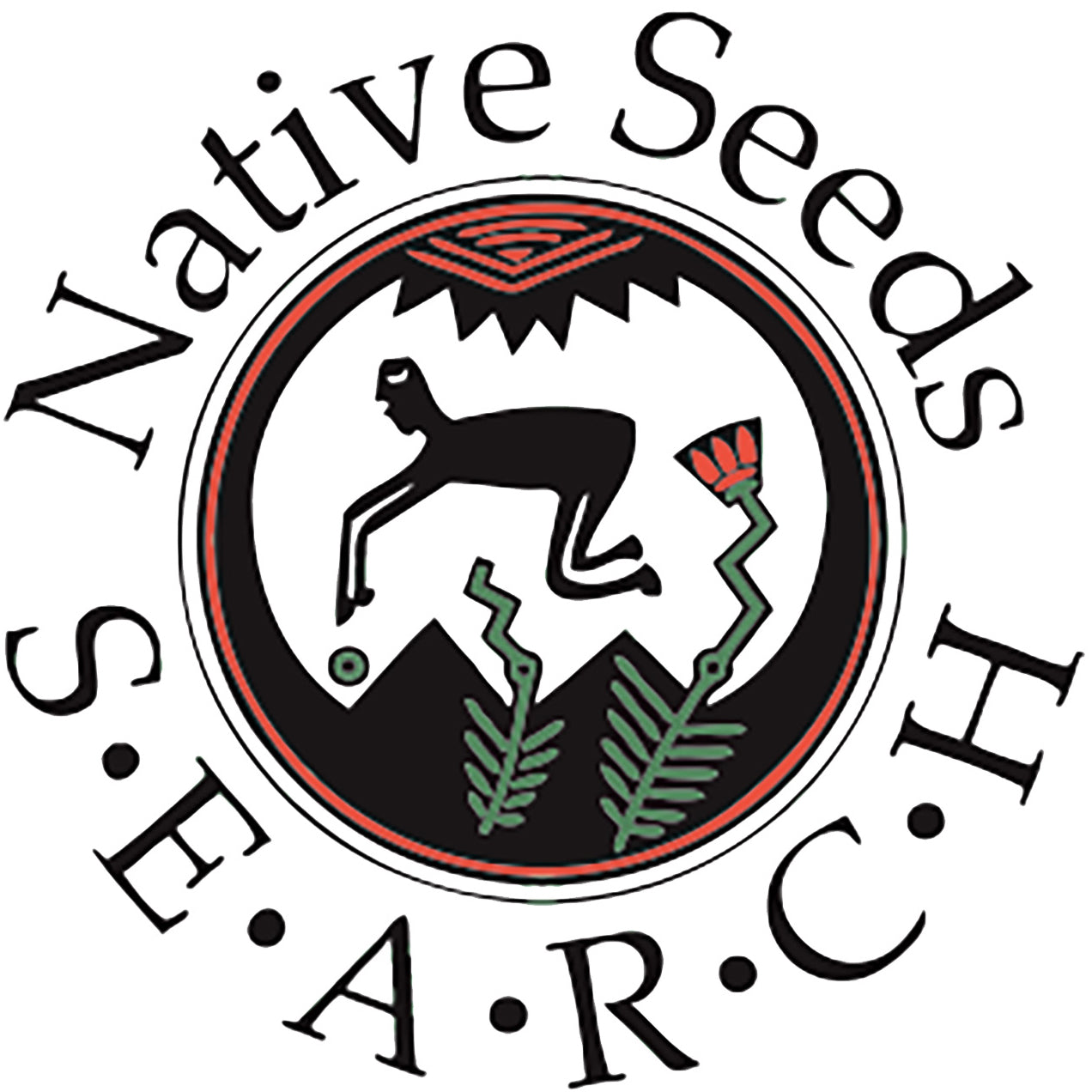
By Sheryl Joy, Collections Manager
Growing plants, for every gardener and farmer anywhere ever, is a learning experience. That is certainly true here at the NS/S Conservation Center, where every year we are growing different varieties that are often unfamiliar to many or all of us. It is also sometimes a humbling experience. It's been that sort of a year at the NS/S garden, especially for teosinte, one of our Adopt-A-Crop varieties.

(Above: Tiny ears of Teosinte forming silks.)
We chose to grow a teosinte variety from Nabogame, Chihuahua, because the original seed in the seed bank had been collected in 1988, but had not yet been successfully regenerated. NS/S had made two attempts at the Conservation Farm in past years, but I thought we could do better with this plant in Tucson. Teosinte that originates near the equator is likely to be day-length sensitive, meaning that it won't flower and fruit unless nights and days are of similar length. In places with a likelihood of early fall frost, chances of harvesting mature seed are poor. Since Tucson is much lower in elevation than the Patagonia farm, I thought we would have a long enough season to get good seed formation in the teosinte. Just to be safe, we planted some of the seed in our courtyard where we could easily protect it from frost.

But it was long before frost came that we began to see trouble. The plants demanded lots of water, and grew lush and tall ... to 5 feet and more, but seemed to dislike our dry desert air. They started tasseling in early September, earlier than expected. But ... no females. No tiny corn-like ears with silks wisping from the top. Not for weeks and weeks. By the time the silks appeared, the plants had collapsed under their own weight, so the tassels (mostly dried up anyway) were in no position to drop their pollen onto the silks. The plants kept trying, producing late small male tassels, some of them even attached to the female ears. But pollination was poor, and those ears that did appear to be pollinated were unable to ripen thanks to an unpredicted freak freeze on October 31. The plants in our courtyard that weren't hit by frost still were unable to mature the little seed that had formed ... an infestation of mealybugs at the leaf axils where the ears are formed did not help.
Did I mention learning and humility? Plants are good teachers, if we are willing to listen to what they tell us. I believe the teosinte was reminding us that growing plants far from their place of origin doesn't always work out well. This is especially true for wild plants that are so well adapted to their native soil and climate. Arizona appears to be a poor place to grow this variety of Chihuahuan teosinte. But the lesson doesn't end there.
Corn, teosinte's descendant, is an incredibly adaptable plant ... that's how it has spread, with human help, from Central America throughout the world. But it has had to change as it travels. For those of us working in seed preservation, it is important to be reminded of this. Hopi corn can be grown in Pennsylvania, and it may take some of its special talents there with it. But it will cease to be Hopi corn. Separated from Hopi songs and nurturing, and from Hopi's rare rainfall and deep sandy soils to receive its long roots, it will change into something else. The same is true for all the other corn varieties in our seedbank collection. If we wish to preserve these varieties with their special talents and adaptations (and we do), then we need to find ways to grow them in the communities and soils and climates that they came from. We have been working for several years on expanding our relationships with farmers around the region to make this possible. But soon we will be putting more resources toward this project by hiring a staff person whose sole focus will be creating and nurturing these connections, helping more of these seeds to grow in their home communities.
The teosinte says it's about time.
Learn more about the 2019 Adopt-A-Crop varieties here>>>
